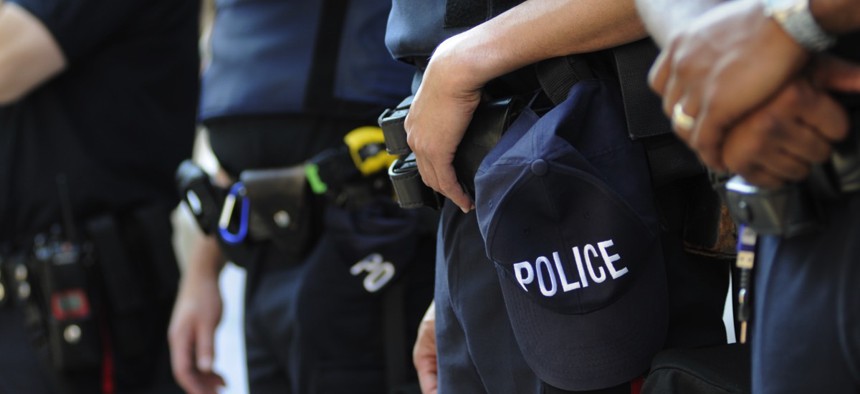Black Lives Matter, Blue Lives Matter

arindambanerjee / Shutterstock.com
A new article from the International City/County Management Association explores the state of police-community relations.
This article was originally published by the International City/County Management Association and crossposted on the organization's news channel.
According to research conducted by the International Association of Chiefs of Police (IACP), law enforcement officers throughout the United States use force on roughly 750,000 people each year, and an estimated 400 individuals will die as a result of those incidents.[1] Police officers across the U.S. also are victims of violence, often stemming from retaliation in use-of-force incidents.
The headlines seem relentless, most recently those published in April 2015, when the city of Baltimore erupted first in peaceful demonstrations and ultimately in violence in the aftermath of the arrest and ultimate death of resident Freddie Gray, who suffered a fatal spinal injury while in police custody.
But the 2014-15 incidences are only the latest. In 1994, Philadelphia police officers failed to restrain suspect Gino Thompson in their van, then drove recklessly enough to cause him to fall, which resulted in Thompson's spine being severed. In 1997, the news media described how Abner Louima had been sodomized with a broken broomstick handle while detained in a New York City police station. Two years later, NYPD officers shot unarmed Guinea immigrant Amadou Diallo 41 times in the doorway of his apartment building and then claimed that he was reaching for a gun.[2]
Racial discrimination and biases are perceived by many to be at the heart of these incidences. In the top 75 cities with the largest police forces, whites are overrepresented among police forces relative to the cities’ population. There are “no universal set of rules” that govern the use of force, according to the U.S. Department of Justice, leaving police officers to rely on their respective agencies for guidance in this area.[3]
What can local governments do to address these issues? In a thought-provoking article titled “Black Lives Matter, Blue Lives Matter: Racial Disparity and a Review of Police-Community Relations,” ICMA Fellow Sarah Hazel and City Manager Ron Carlee, both of Charlotte, North Carolina, examine the underlying factors that have shaped police-community relations and the steps that local government professionals can take to mitigate the kinds of crises discussed above. The article explores four critical elements inherent in policy-community relations and police use of force. They are:
- The context of race in society
- The different perceptions of policy based on race
- The prevalence of police use of deadly force
- Policies on police use of force.[4]
“Black Lives Matter, Blue Lives Matter” also provides a framework for discussing use-of-force policies, including ways local appointed and elected officials can ensure accountability by police. The authors identify specific areas that are crucial for discussions among local leaders, police, and the community to review prior to the outbreak of an incident (see corresponding infographic). Finally, the article suggests ways to mitigate police-community relations incidents, as well as several opportunities communities can take advantage of to improve those relations.
Click here to order "Black Lives Matter, Blue Lives Matter."
[1] International Association of Chiefs of Police (IACP). Police Use of Force in America (Fairfax, Va.: IACP, 2001). Theiacp.org/Portals/0/pdfs/Publications/2011useofforce.pdf
[2] “List of cases of police brutality in the United States (n.d.). Retrieved from http://en.wikipedia.org/wiki/List_of_cases_of_police_brutality_in_the_United_States
[3] National Institute of Justice (NIJ). “Police Use of Force.” Retrieved from http://nij.gov/topics/law-enforcement/officer-safety/use-of-force/pages/welcome.aspx
[4] Hazel, Sarah, and Carlee, Ron. "Black Lives Matter, Blue Lives Matter: Racial Disparity and a Review of Police-Community Relations." In The Municipal Year Book 2015. (Washington, D.C.: ICMA Press, 2015), p. 4.
NEXT STORY: Are state websites up to the mobile challenge?





